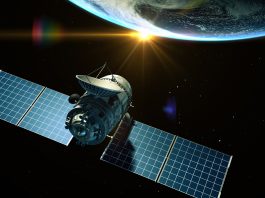A new telescope launching this autumn could spot biosignatures – signs extra-terrestrial life – on other planets within three days.
Research indicates that the new telescope may be able to detect signs of extra-terrestrial life on other planets in as little as 60 hours.
“What really surprised me about the results is that we may realistically find signs of life on other planets in the next five to 10 years,” said Caprice Phillips, a graduate student at The Ohio State University, who has shared her preliminary findings at a press conference during the 2021 American Physical Society (APS) April Meeting.
Gas dwarf planets are capable of fostering life. However, as none of these ‘super-Earths’ or ‘mini-Neptunes’ are present in our solar system, scientists face challenges when determining whether their atmospheres contain potential signs of living beings, such as ammonia.
Philips has determined that when the James Webb Space Telescope (JWST) launches this October, it could plausibly identify ammonia around six gas dwarf planets after just a few orbits.
She and her team modelled how JWST instruments would react to various clouds and atmospheric conditions, then created a ranked list of where the telescope should search for life.
“Humankind has contemplated the questions, ‘Are we alone? What is life? Is life elsewhere similar to us?'” said Phillips. “My research suggests that for the first time, we have the scientific knowledge and technological capabilities to realistically begin to find the answers to these questions.”
The American Physical Society is a non-profit membership organisation working to advance and diffuse the knowledge of physics through its outstanding research journals, scientific meetings, and education, outreach, advocacy, and international activities. APS represents over 55,000 members, including physicists in academia, national laboratories, and industry in the United States and throughout the world.








